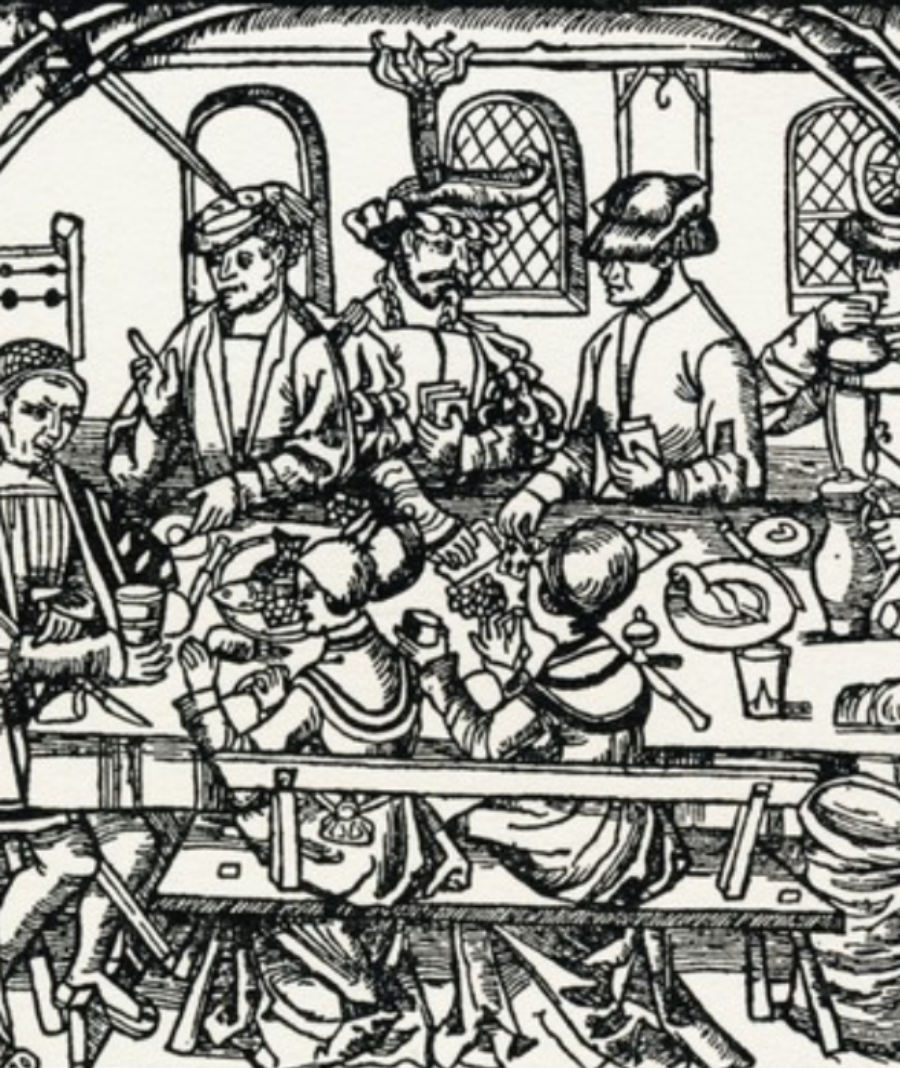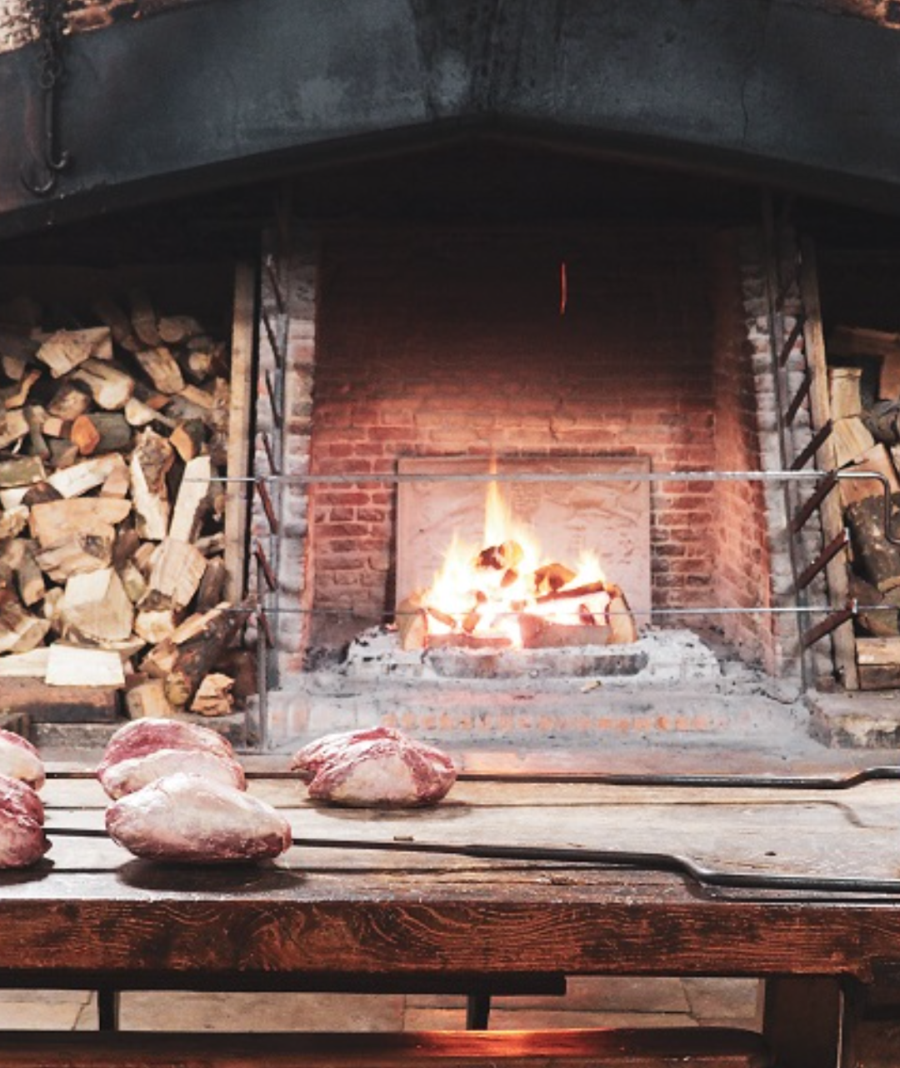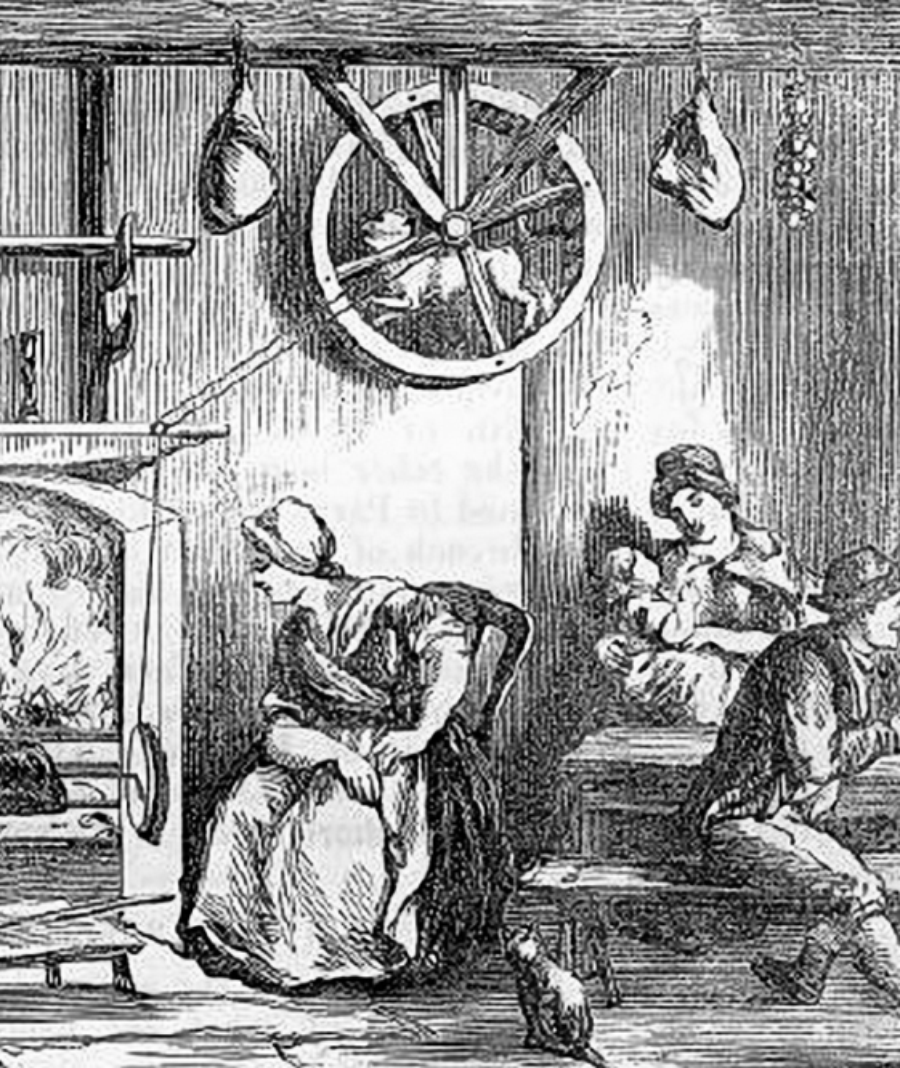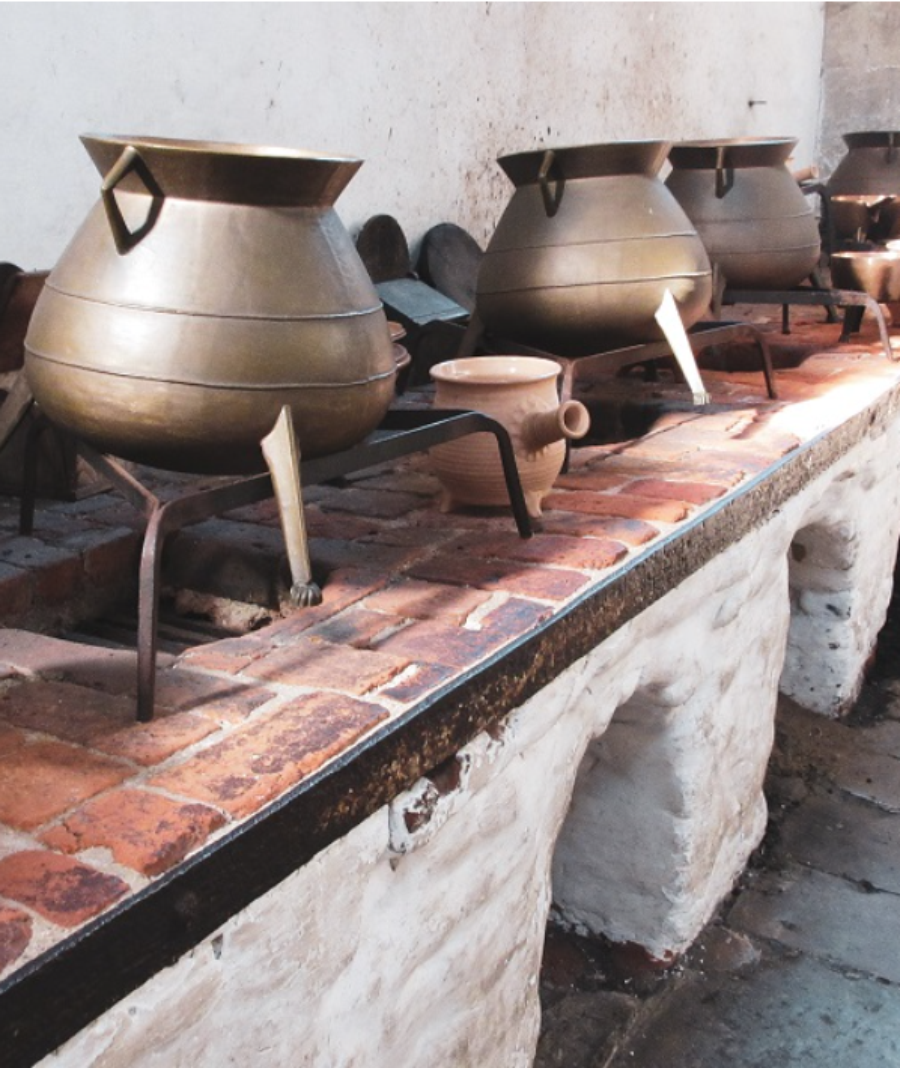Journal
If you thought feeding a family of four or five every day was a struggle, then spare a thought for Henry VIII’s staff at the Hampton Court Palace Kitchens.
Nestled on the banks of the River Thames the Hampton Court Palace is one of England’s most iconic landmarks; its grand architecture and lush gardens draw visitors from around the world, while the palace kitchens offer a fascinating glimpse into centuries of culinary history. From Tudor feasts to royal banquets, the kitchens of Hampton Court Palace have witnessed it all, serving as the heart of culinary innovation and indulgence for centuries.
While most of the kitchens Guild Anderson design are for family use, albeit with the occasional high day and holiday, the Palace kitchen staff made up of 200 cooks, grooms, and pages worked to produce over 800 meals a day for the royal household, making the Palace kitchens the largest in Tudor England. From boiling cauldrons to roasting spits, 1.3 million logs burned in the hellish fires every year.

Tudor Era
The story of the Hampton Court Palace kitchens begins in the early 16th century during the reign of King Henry VIII. It was under Henry’s rule that the palace underwent extensive renovations, including the construction of elaborate kitchens to cater to the king’s extravagant tastes.
The scale of Henry VIII’s kitchens at Hampton Court Palace was astonishing: a labyrinth of 55 rooms, covering 3,000 square feet, where a total of 200 staff produced an average of 600-800 meals twice a day. The kitchen was already big when Henry acquired the palace from Cardinal Wolsey in 1529.
The Tudor kitchens were a hive of activity, divided into a number of departments, each controlled by a Sergeant and a team of yeoman and grooms, bustling with cooks, scullions, and servants preparing lavish feasts fit for royalty.
Roasting spits turned over open fires, while cauldrons bubbled with hearty stews and soups. The Tudor kitchens at Hampton Court Palace were a testament to the opulence and excess of the Tudor court, where food was not just sustenance but a symbol of power and prestige.

The Kitchen department where meat was roasted was under the control of three Master Cooks – one for the King, the Queen and the rest of the Court. These staff toiled under a complex set of rules determining which of the 1,200-odd members of Henry’s court qualified for meals, as part of their pay.
Working in these kitchens could be a sweaty and dirty job. Ordering, preparing and cooking food on this scale, required an efficient system. Raw food arrived at one end, and finished dishes ready to be served at the other. Fresh water for drinking and cooking, was piped into the palace from springs three miles away.
The quantities of meat procured for the Court in one year during Elizabeth I’s reign included:
Sheep – 8,200
Deer – 2,330
Pigs – 1,870
Oxen – 1,240
Calves – 760
Wild boar – 53
Henry VIII’s kitchens continued to be used for a further two hundred years, feeding the tables of Tudor, Stuart and Georgian monarchs - and the many courtiers.

Stuart Era
As the palace passed into the hands of the Stuart monarchs, the kitchens continued to evolve, embracing new culinary techniques and flavours.
Under the reign of King James I, the kitchens saw the introduction of exotic ingredients from the New World, such as potatoes and tomatoes, which transformed the royal cuisine.
The Stuart era also witnessed the rise of professional chefs, who brought French culinary influences to the Palace kitchens, elevating the art of cooking to new heights of sophistication.
The kitchens at Hampton Court Palace became renowned for their culinary innovation and were at the forefront of culinary trends in Renaissance Europe.

Georgian Era
By the 18th century, the Georgian era brought further changes to the Hampton Court Palace kitchens.
The Industrial Revolution revolutionised food production, with advancements in technology streamlining the cooking process. Innovations such as the introduction of gas stoves and cast iron cookware transformed the way food was prepared, allowing for greater precision and efficiency in the kitchens.
The Georgian period also saw a shift towards lighter, more refined cuisine, with an emphasis on elegance and presentation.
Despite these changes, the kitchens at Hampton Court Palace remained a hub of activity, catering to the gastronomic desires of the royal court.

Modern Era
Today, the kitchens of Hampton Court Palace continue to captivate visitors with their rich history and culinary heritage.
While no longer in active use, the kitchens have been meticulously preserved and restored, offering a fascinating glimpse into the past. Interactive exhibits and demonstrations bring the history of the kitchens to life, allowing visitors to experience firsthand the sights, sounds, and smells of centuries past.
The kitchens of Hampton Court Palace stand as a testament to the enduring legacy of culinary craftsmanship and innovation. From the opulent feasts of the Tudor era to the refined cuisine of the Georgian period, these kitchens have witnessed centuries of culinary evolution and adaptation. Today, they offer a window into the past, allowing visitors to step back in time and experience the sights, sounds, and flavours of royal life.
Exploring the history of the Hampton Court Palace kitchens offers Guild Anderson an insight in to traditional kitchen design and allows us a deeper appreciation for the role of food in shaping our cultural heritage and understanding of the past.


